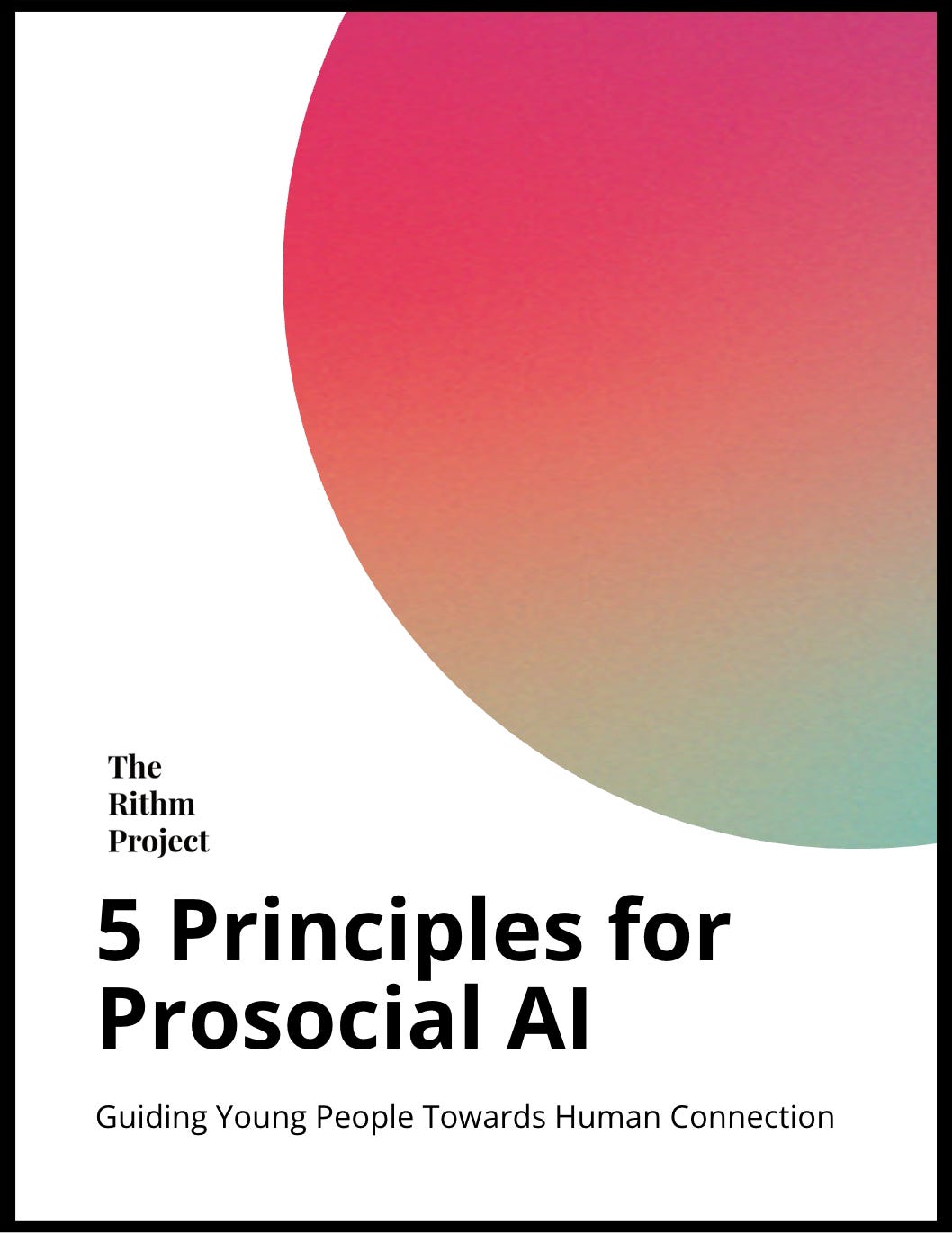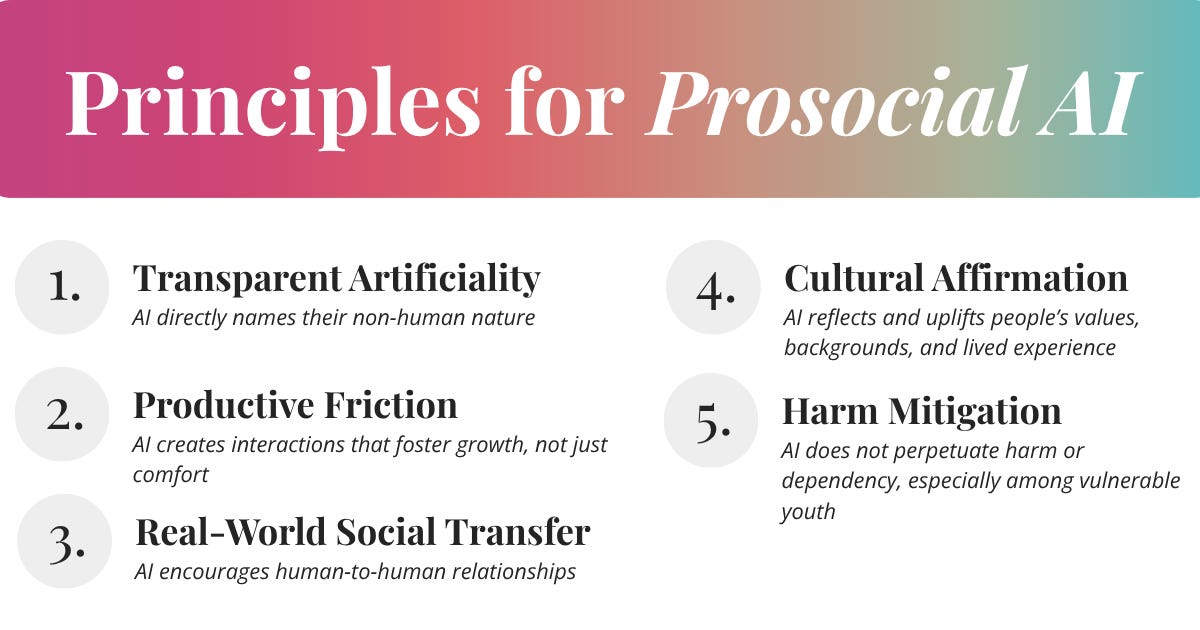Five Principles for Prosocial AI
How to design (and choose) technology that strengthens human connection
Nearly 3 in 4 U.S. teens are using AI companions.
That’s the headline from a recent Common Sense Media report—and it confirms what we’ve been hearing from young people. AI companionship is no longer a fringe behavior. It’s becoming a central part of how this generation thinks of and navigates relationships.
What’s striking is the range: We hear stories about how these tools are helping teens practice communication skills that show up in their real-life friendships. And we also hear about the slippery slope into over-reliance—where AI becomes a substitute, not a support.
So much of our work to date has focused on helping young people build awareness and agency in how they use technology. But agency doesn’t exist in a vacuum—it’s shaped by the tools themselves. Some platforms help us solve a problem and move on. Others pull us in, distract us, and leave us feeling more depleted than before.
This summer, we set out to name what differentiates the tech that supports healthy connection from that which imperils it.
So, hot off the presses…
In this framework, we distill five key principles that define what it looks like when AI is designed to nurture healthy connection.
We hope it’s useful in two ways:
For consumers: to help young people and the adults that support them recognize which features empower connection, so they know when to proceed with caution or confidence.
For AI builders: to surface the small (and big) design choices that shape how people relate, not just to the product, but to each other.
This first draft was co-created with an incredible crew of Gen Z youth, technologists, researchers, and mental health professionals. And we know it’s not final. It’s meant to be tested, lived with, and sharpened through use.
So we invite you to dive in.
What resonates? What feels off? Where do the tensions lie in trying to live these principles? Drop a comment or send us a note, we’d love to hear what you think.
We’re especially looking for “in the wild” examples. Have you had an AI interaction that clearly reflects one of these principles—or reveals how murky the line can get? Share a screenshot or excerpt that brings it to life.
Here’s to building not just awareness, but also tools that help us build towards a more connected and critical future.







